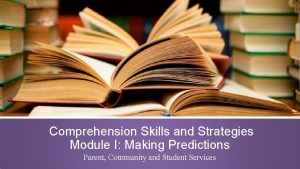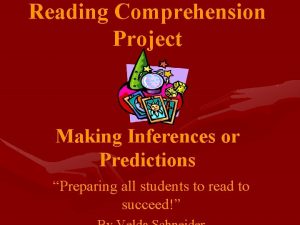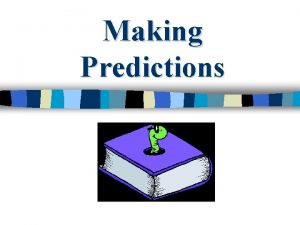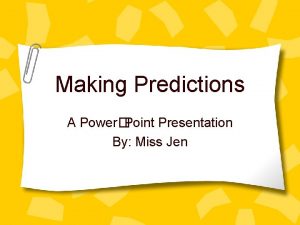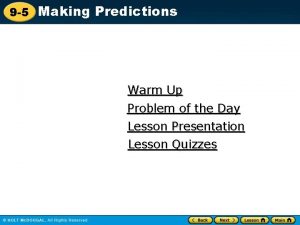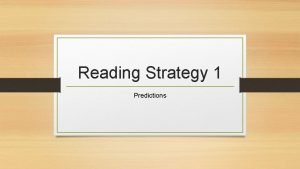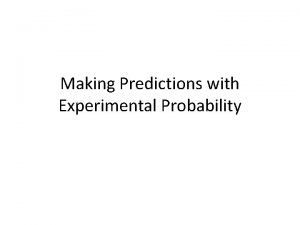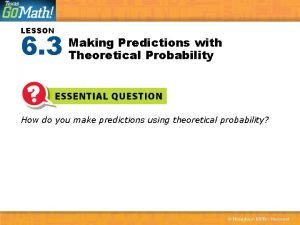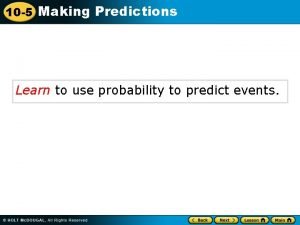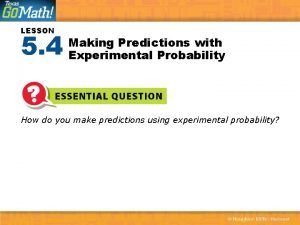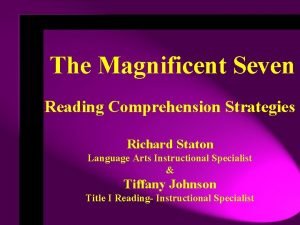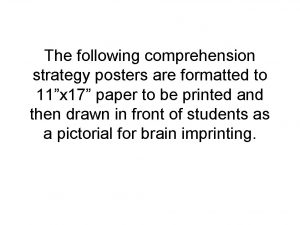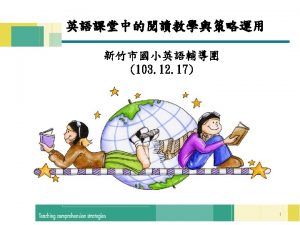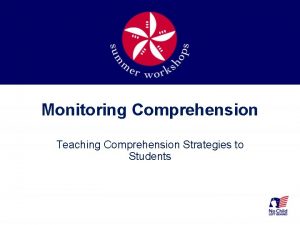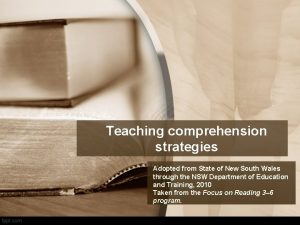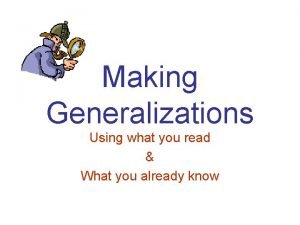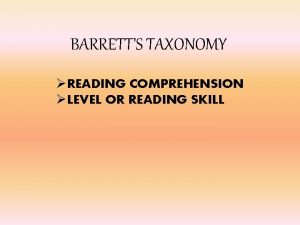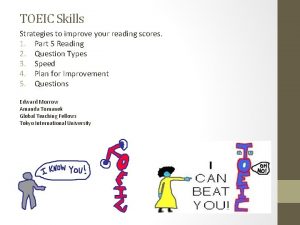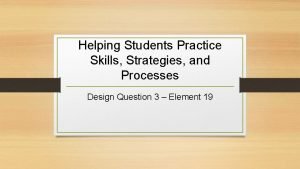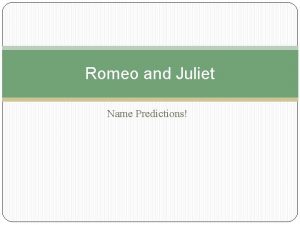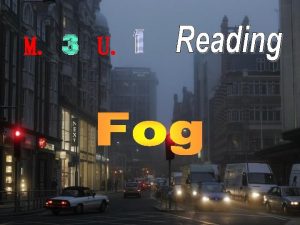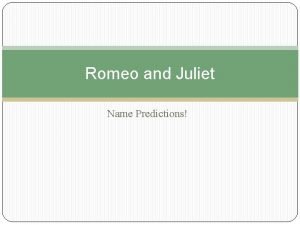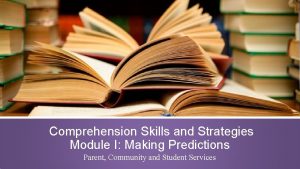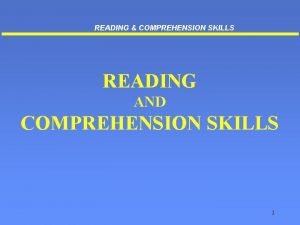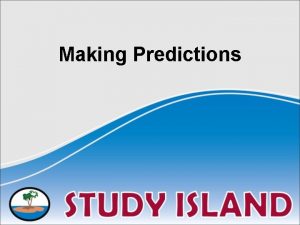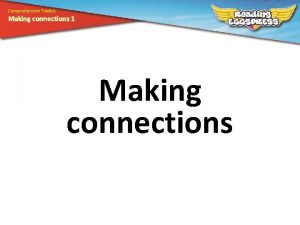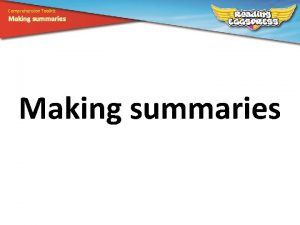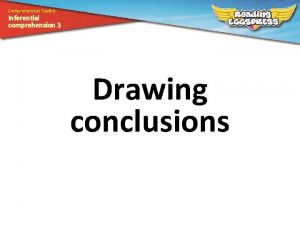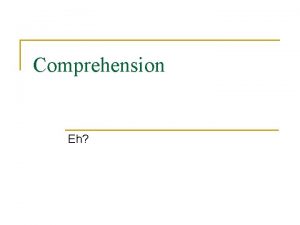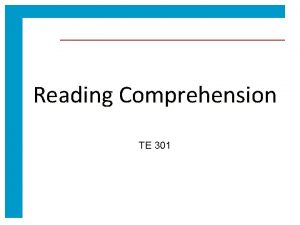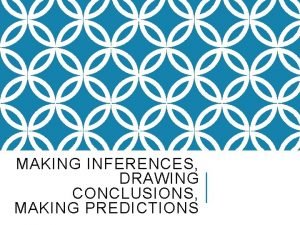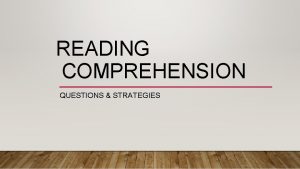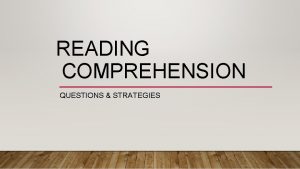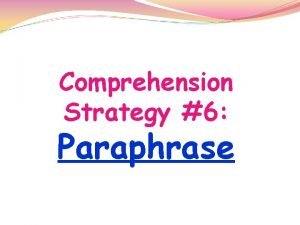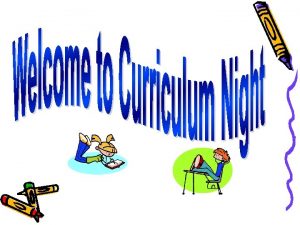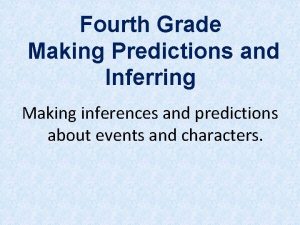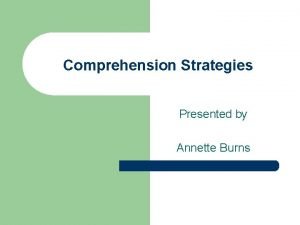Comprehension Skills and Strategies Module I Making Predictions




























- Slides: 28

Comprehension Skills and Strategies Module I: Making Predictions Parent, Community and Student Services

DISTRICT GOALS 1. 100 percent graduation 2. Proficiency for all 3. 100 percent attendance 4. Parent and community engagement 5. School safety

Reading is the to learning!

Something Memorable…

Reading Comprehension is the ability to read text, process it and understand its meaning.

Author’s Purpose Making Predictions Drawing Inferences Comparing & Contrasting Making Connections Cause and Effect Main Idea and Details Visualize Summarize


Making Predictio ns

Objectives ▪ To increase our understanding of the reading comprehension strategy making predictions ▪ To use sentence frames and graphic organizers to support student use of this strategy ▪ To participate in learning activities in order to support learning at home

Vocabula ry 1. predic t 2. confir m 3. think 4. verify 5. revise 6. forese

Tea Party

Making Predictions A strategy in which readers use information from the text they are reading and their personal experiences to anticipate what they are about to read.

Making Predictions Why? § Anticipation and prediction are key characteristics of effective reading § Promotes the use of prior knowledge § Improves the ability to draw inferences § Ongoing process that actively engages the reader § Improves retention

Making Predictions How? § § Use title, illustrations and text features to make predictions Focus on the text at hand Constantly think ahead Refine, revise, and verify predictions as you obtain additional information while reading § Repeat the process and make new predictions

Making Predictions Let’s Practice!

Graphic Organizer First Then My prediction is… Was your prediction confirmed? _______ If not, what happened instead? __________

Sentence Frames 1. 2. 3. 4. 5. 6. 7. 8. I predict that _____ will happen because_______. At first I thought ______, but now I expect ______. I foresee ______ will_____ because_______. Since ______, I can assume that _____ will ______. I wish to change my prediction to_______ because ________. My prediction was confirmed/verified when __________. My prediction was refuted when _________. After analyzing the text features, I hypothesize that________.

Making Predictions

Making Predictions “Mr.

Making Predictions “Mr. Nibbles” § What event is most likely to occur next? Mr. Nibbles is going to get caught in that mousetrap. § What evidence from the text and from your own experiences support your prediction? I believe this because the device that Mr. Nibbles encounters is a mousetrap. He is attempting to remove cheese from a mousetrap. This will probably cause him to get caught by the mousetrap.

What are the benefits of using the strategy Making Predictions during reading? A. Improves the ability to draw inferences B. Improves retention C. You can enjoy a future career with the Psychic Network. D. A and B

Home Practice PREDICTING VOCABULARY § Select 3 -4 words from a book/poem/article that your child is going to read. § Ask your child to predict the definitions of the words based on word parts, root words, and prior knowledge. § Ask your child to write sentences that he/she might expect to see in the selection. § Ask your child to read and to evaluate his/her sentences.

Home Practice TOUR OF A BOOK § Using a book, ask your child to make a list of the different text features that supply clues about the text such as: chapter titles, pictures, maps, table of contents, and book cover. § Based on this information, ask your child to make a prediction about what the text will be.

Home Practice NEWS STORIES § Select a newspaper article. § Ask your child to cover the story with a piece of paper, showing only the headline. § Ask your child to read the headline aloud to make a prediction about the story and answer who, what, where, when, why, and how. § Ask your child to read the first paragraph of the story and discuss whether he/she can confirm or reject prediction. § Continue reading and stopping along the way to make predictions.


Objectives ▪ To increase our understanding of the reading comprehension strategy making predictions ▪ To use sentence frames and graphic organizers to support student use of this strategy ▪ To participate in learning activities in order to support learning at home


families. laus d. net
 Reading comprehension making predictions
Reading comprehension making predictions Prediction vs inference venn diagram
Prediction vs inference venn diagram Will won't may might for predictions
Will won't may might for predictions Good readers making prediction by
Good readers making prediction by Making predictions powerpoint
Making predictions powerpoint Making predictions quiz
Making predictions quiz Making predictions reading strategy
Making predictions reading strategy Making predictions with probability
Making predictions with probability Making predictions with theoretical probability
Making predictions with theoretical probability Making predictions with probability
Making predictions with probability How do you make predictions using experimental probability
How do you make predictions using experimental probability Seven reading strategies
Seven reading strategies Comprehension strategy posters
Comprehension strategy posters 6 reading comprehension strategies
6 reading comprehension strategies Drta reading strategy
Drta reading strategy Teaching comprehension strategies nsw
Teaching comprehension strategies nsw Making generalizations reading comprehension
Making generalizations reading comprehension Literal comprehension involves
Literal comprehension involves Toeic reading time management
Toeic reading time management Helping students practice skills strategies and processes
Helping students practice skills strategies and processes War making and state making as organized crime
War making and state making as organized crime C device module module 1
C device module module 1 What is in a name romeo and juliet
What is in a name romeo and juliet Take a look at the following pictures and answer
Take a look at the following pictures and answer Intention prediction arrangement
Intention prediction arrangement Names from romeo and juliet
Names from romeo and juliet What is interpersonal skills and intrapersonal skills
What is interpersonal skills and intrapersonal skills Slills
Slills Is making inference simply making a guess
Is making inference simply making a guess
